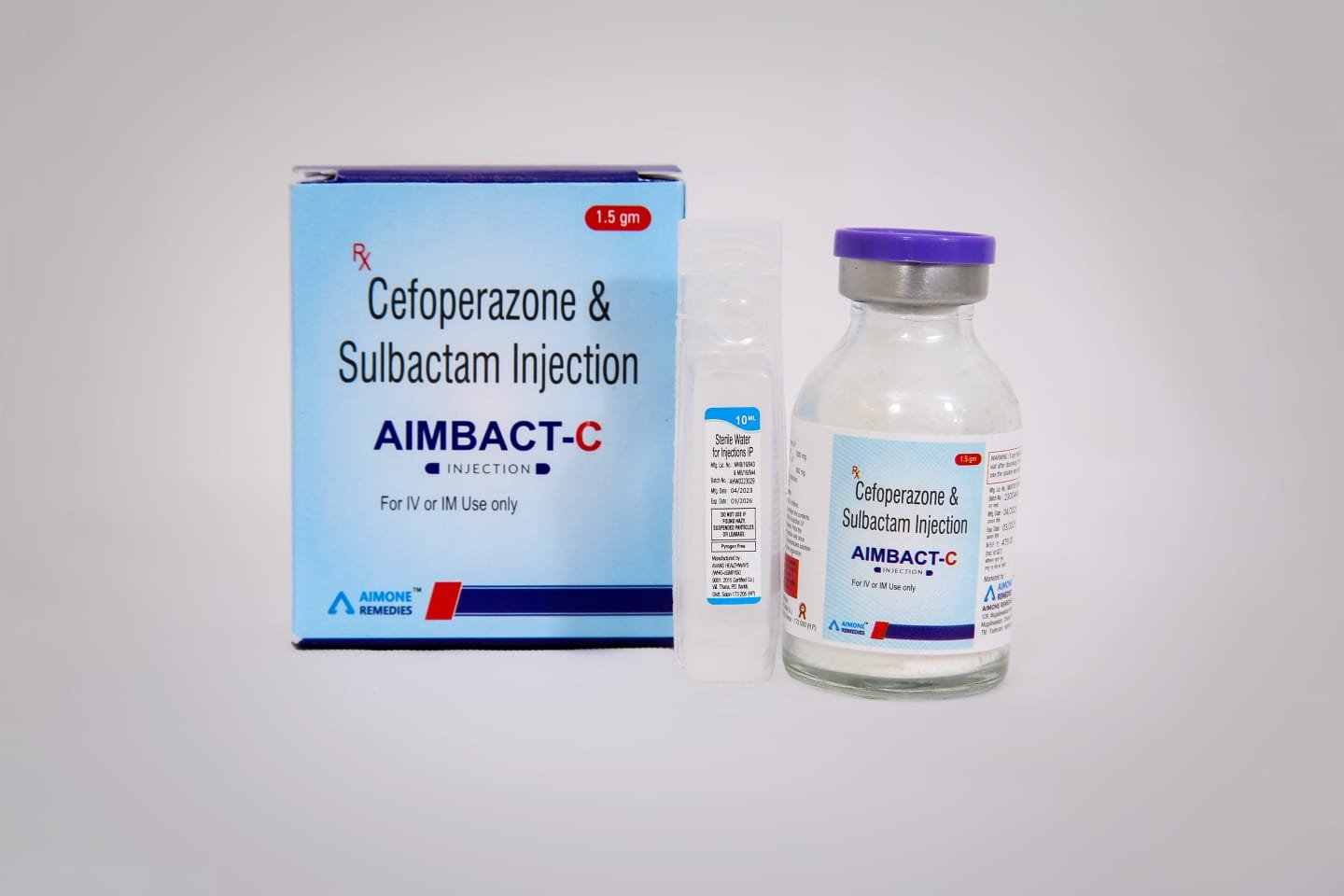
AIMBACT-C
Cefoprazone Sulbactum Injection
Cefoprazone Sulbactam Injection is a combination antibiotic used to treat bacterial infections. It combines Cefoprazone, a cephalosporin antibiotic, with Sulbactam, a beta-lactamase inhibitor.

Cefoprazone:
Class
Cephalosporin (third-generation)
Action
Cefoprazone works by inhibiting the synthesis of bacterial cell walls, leading to bacterial death. It is effective against a wide range of gram-positive and gram-negative bacteria.
Uses
It is commonly used to treat infections such as:
Sulbactam
Class
Beta-lactamase inhibitor
Action
Sulbactam works by inhibiting beta-lactamase enzymes, which are produced by certain bacteria to break down beta-lactam antibiotics like Cefoprazone. By inhibiting this enzyme, Sulbactam extends the spectrum of Cefoprazone to cover bacteria that would otherwise be resistant.
Uses
It helps in treating infections caused by beta-lactamase-producing bacteria, which include certain strains of Escherichia coli, Klebsiella, Pseudomonas aeruginosa, and Staphylococcus aureus.

Indications
-
Cefoprazone Sulbactam Injection is typically used to treat:
Serious infections caused by susceptible bacteria, including pneumonia, intra-abdominal infections, soft tissue infections, sepsis, and infections of the bones and joints. - It may be used in hospital settings when oral antibiotics are not appropriate or when the infection is severe.
Dosage and Administration
The exact dosage depends on the severity of the infection, the patient’s age, and kidney function.
It is typically administered intravenously or intramuscularly by healthcare professionals
For adults, the dose is often 1 to 2 grams of Cefoprazone, combined with 0.5 to 1 gram of Sulbactam, administered every 8 to 12 hours.
Side Effects
Common side effects include:
